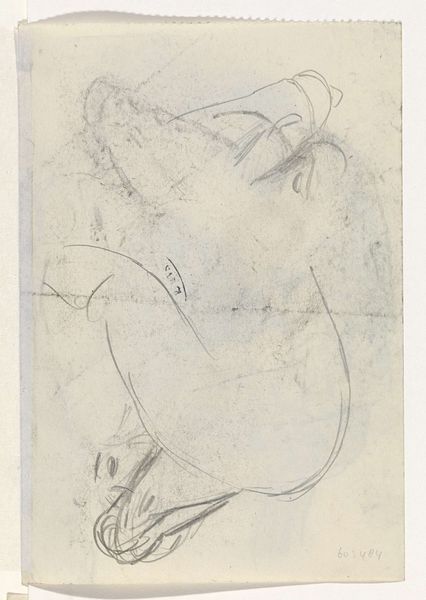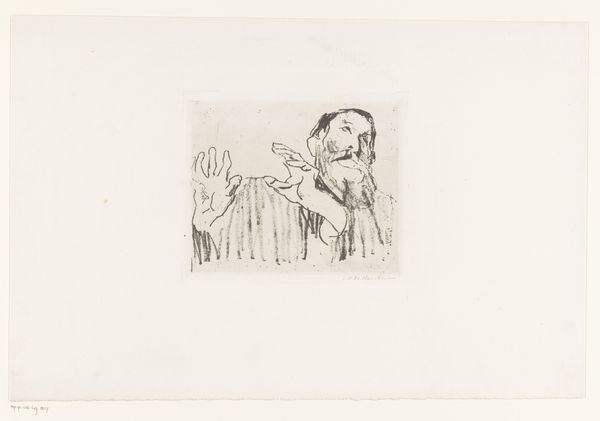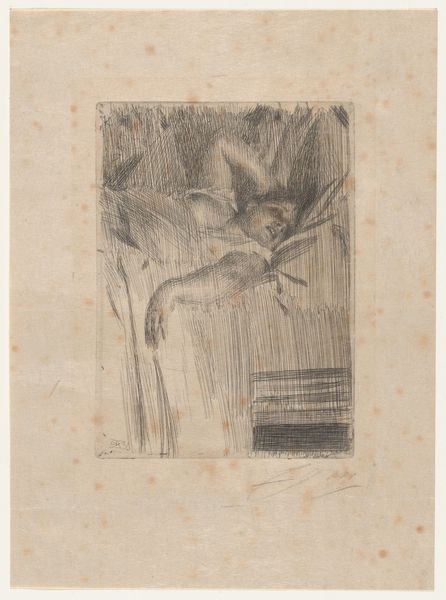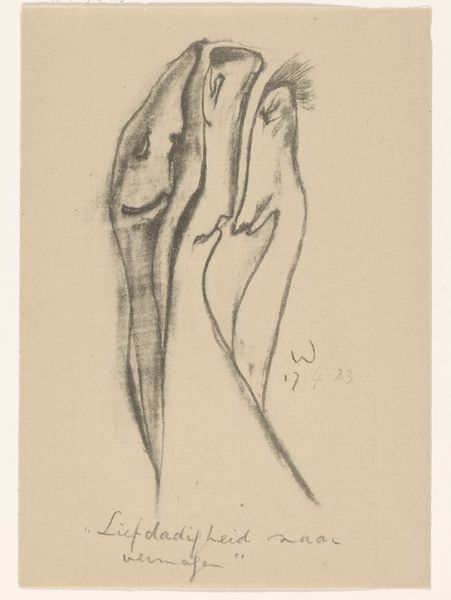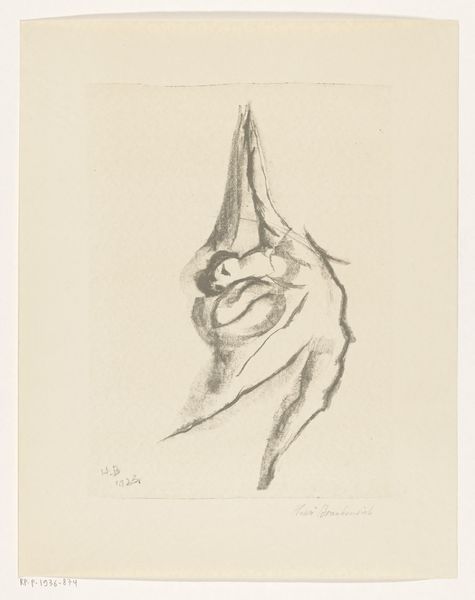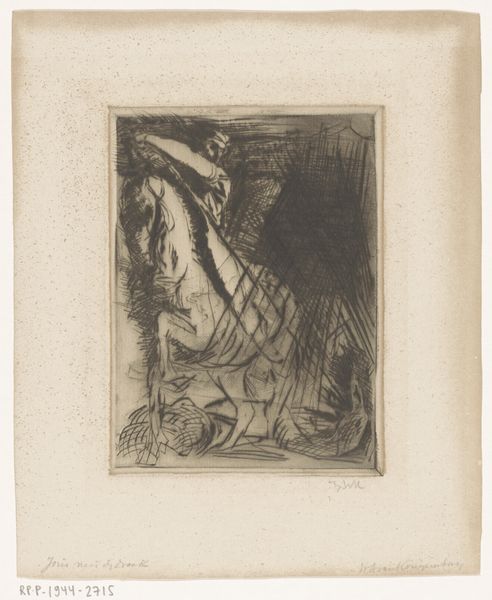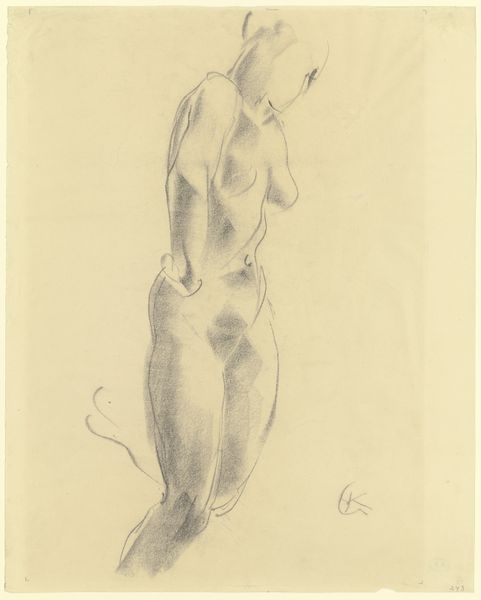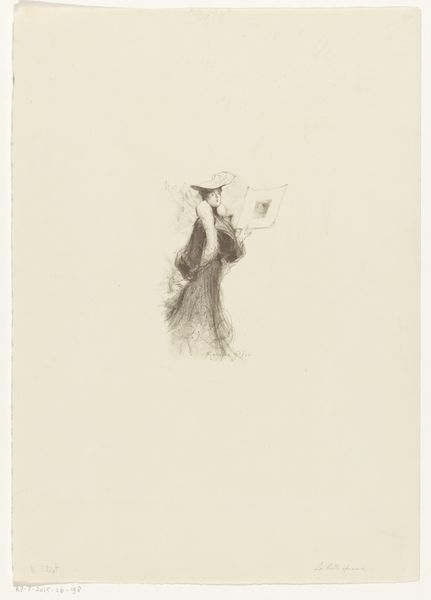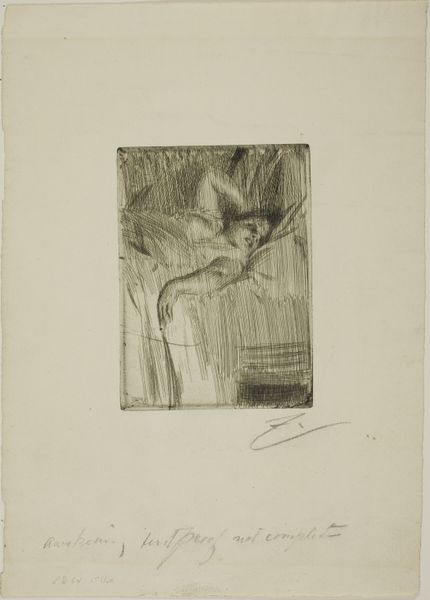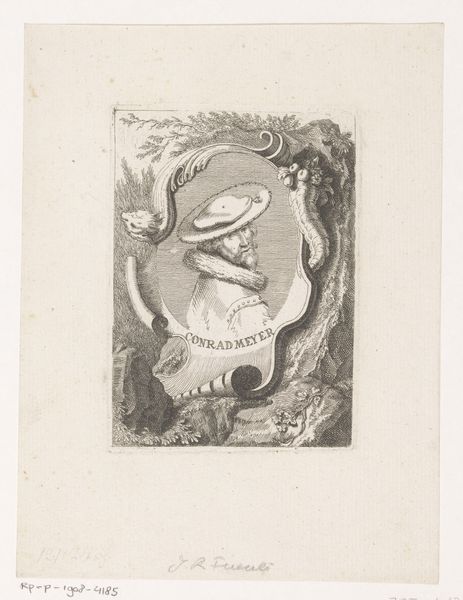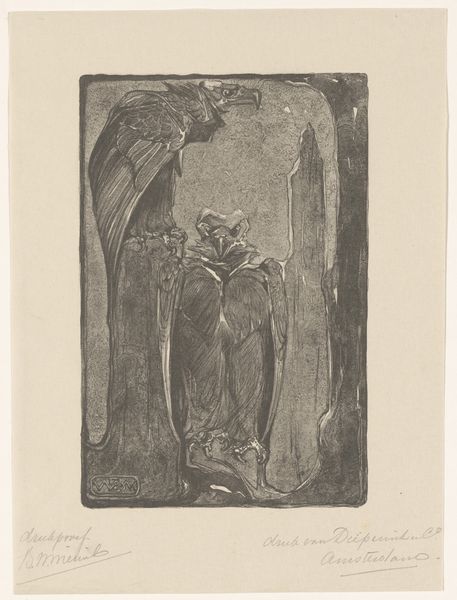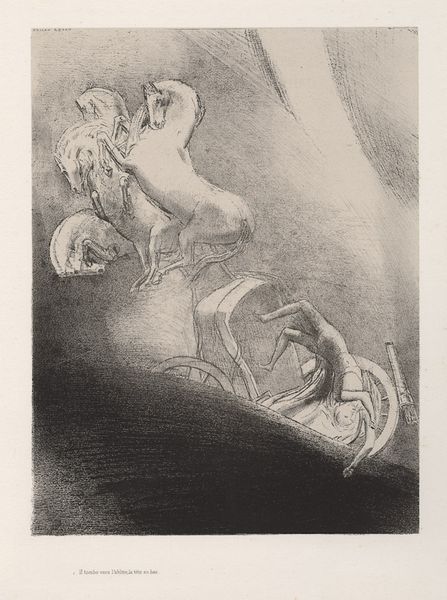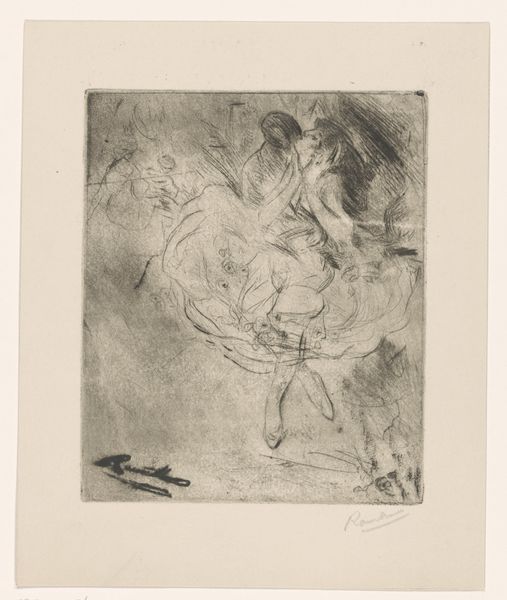
Dimensions: height 238 mm, width 188 mm
Copyright: Rijks Museum: Open Domain
Curator: Let's discuss "De sentimenteele joffer," likely created around 1926 by Hein von Essen. It’s rendered as an etching, exhibiting qualities of both drawing and printmaking. Editor: My immediate impression is of fragility, perhaps even resignation. The upward tilt of the face, eyes closed, evokes a certain melancholy. Curator: The pose, the closed eyes—they speak to a turn-of-the-century aesthetic where emotion and inner states were paramount. You can see the influence of Art Nouveau and Symbolism, movements concerned with expressing ideas that escape everyday rational understanding, a sort of push back from what they may see as an overtly pragmatic era. The emphasis on the line, the delicate shading, enhance this impression. Editor: Yes, there's an intentional move away from hyperrealism. Consider how the figure is framed by that intriguing textured background – almost like a woven tapestry but also casting shadows. Does this texture function as some sort of barrier, as the face looks away and almost attempts to push past it. Curator: That’s a good interpretation. In looking at Von Essen’s placement of that detail we also should think about the context around exhibitions at the time, it’s something to consider that would have given meaning. Looking into how exhibiting imagery from this time gave rise and prominence for certain artists over others could bring context into its production and consumption. It reflects on the rise of psychological introspection during that period, and also what can be a kind of melancholic rebellion against social expectations. Editor: It's interesting that you bring up the social expectations, especially when thinking about women during the early 20th century. Could the expression of sorrow become an accepted outlet within acceptable aesthetic boundaries? The woman isn't overtly confrontational. Curator: Exactly, you know. Her sentiments could be passively rebellious through an artistic gaze. She embodies what society has dictated is right. Editor: Right! Well, considering it from a feminist theory and historic context gives an additional way to view and analyze how society influences an artwork, the message it gives and evokes. Curator: Indeed. Thank you. I find that our differing viewpoints are what can makes art all the more compelling. Editor: Exactly! Thank you. That was an interesting discourse.
Comments
No comments
Be the first to comment and join the conversation on the ultimate creative platform.
